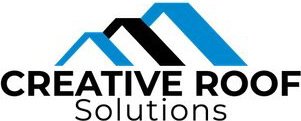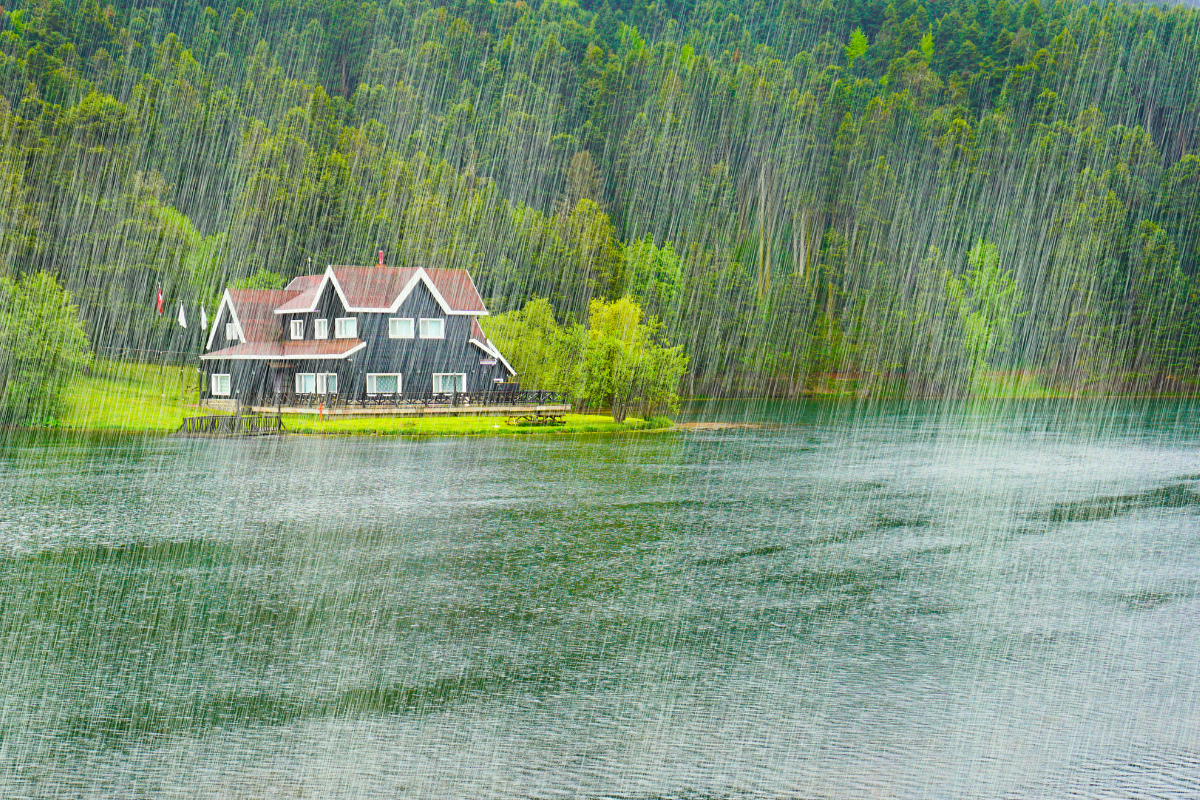Best Roofing Materials for Washington’s Wet Climate
Washington’s climate is famously damp—particularly in the western part of the state. With long rainy seasons, over 150 days of precipitation annually in many areas, and regular overcast skies, your roof isn’t just a design element—it’s your first line of defense.
Choosing the right roofing material in Washington means looking beyond aesthetics. It’s about moisture resistance, durability, and long-term performance in a setting where rain, moss, and freeze-thaw cycles are all part of the equation.
For homeowners in the Pacific Northwest, investing in the proper roofing solution not only protects your home but also preserves property value, prevents costly repairs, and ensures comfort year-round.
Challenges of Roofing in Washington’s Wet Climate
Homeowners face several region-specific challenges that affect roof performance and longevity:
Consistent Rainfall: The high volume and frequency of rain can overwhelm lesser materials, leading to leaks or saturation over time. Roofs must be able to shed water quickly and efficiently.
Moss, Algae, and Mold Growth: Constant dampness, shaded areas, and organic debris create a perfect environment for moss and algae. These can break down roofing materials, compromise aesthetics, and trap additional moisture.
Freeze-Thaw Cycles: In areas with colder winters, fluctuating temperatures cause water to freeze and expand in roofing crevices. This can lead to cracking, delamination, and long-term deterioration if materials aren’t designed for resilience.
Together, these factors demand roofing systems that go beyond the minimum. Homeowners should prioritize water-shedding ability, biological resistance, and structural integrity when selecting materials for their Washington home.
Key Features of Moisture-Resistant Roofing Materials
Not all roofing products are built to handle a soggy climate. In Washington, the best materials share a few critical qualities:
Water Resistance and Impermeability
Look for materials that repel water rather than absorb it. Clay tiles, metal, slate, and specially treated asphalt shingles all offer superior protection compared to untreated wood or low-end shingles.
Ventilation and Underlayment Compatibility
A moisture-resistant roof still needs to breathe. Proper attic ventilation paired with the right underlayment (such as synthetic water-resistant membranes) helps prevent condensation buildup beneath the roof deck.
Long-Term Durability
Choose roofing products that are engineered for longevity in damp conditions. Resistance to rot, corrosion, and UV breakdown will reduce the need for frequent repairs.
When these features work together, your roof stands a better chance against Washington’s relentless rainfall and cool, moss-prone climate.
Asphalt Shingles: Affordable and Versatile
Asphalt shingles remain one of the most popular roofing materials in the region—not just for their affordability, but because of ongoing improvements in performance.
Architectural vs. Three-Tab Shingles:
Architectural shingles, with their thicker profile and layered look, provide better durability and water resistance than flat three-tab options. They also hold up better under wind and heavy rain.Algae-Resistant Coatings:
Many shingle brands now offer algae-resistant granules that help prevent dark streaks and biological growth—ideal for homes in shaded or forested areas.Installation Tips for Wet Zones:
Proper flashing, high-quality underlayment, and ice/water barriers are a must in wet climates. Partner with a roofer experienced in high-moisture installations to ensure a watertight seal.
For homeowners on a budget, modern asphalt shingles offer excellent value—especially when enhanced with moisture-resistant features designed for the Pacific Northwest.
Metal Roofing: Long-Lasting and Low Maintenance
Metal roofing is one of the top choices for Washington homeowners seeking longevity, protection, and low upkeep in wet conditions.
Popular Metal Roofing Types:
Steel: Strong and budget-friendly, especially with protective coatings.
Aluminum: Naturally rust-resistant, making it ideal for coastal or humid zones.
Zinc: Durable and corrosion-resistant, with a sleek matte finish and long lifespan.
Why It Performs Well in Rainy Climates:
Standing Seam Design: Raised seams help direct water off the roof quickly, minimizing the chance of leaks or pooling.
Nonporous Surface: Metal doesn’t absorb moisture, so there's no risk of rot or water damage.
Moss and Algae Resistance: The slick surface discourages biological growth, especially when combined with factory-applied coatings.
Although the upfront cost of metal roofing is higher than asphalt, it can last 40–70 years with minimal maintenance—making it an ideal investment for homes in Washington’s wettest regions.
Composite and Synthetic Roofing Options
For homeowners who want the look of high-end materials with improved moisture performance, composite and synthetic roofing is a smart solution.
What Sets These Materials Apart:
Engineered Durability: Made from polymers, recycled plastics, or rubber blends, these roofs resist water, wind, algae, and cracking.
Lightweight Yet Strong: Unlike natural slate or tile, composite options won’t strain your roof’s structure.
Mimics Natural Aesthetics: Available in styles that resemble cedar shake, slate, or clay tile—without the downsides of natural materials in damp conditions.
Why They Work in the Pacific Northwest:
They’re specifically designed to handle changing weather conditions and heavy rainfall.
Many synthetic shingles have Class 4 impact resistance, making them highly durable against debris and wind.
Composite roofing bridges the gap between form and function, offering moisture resistance with visual appeal for homeowners who want lasting curb appeal.
Slate Roofing: Natural Beauty with Built-In Protection
Slate roofing offers both elegance and exceptional performance in damp climates like Washington's. Made from natural stone, slate is inherently water-resistant and incredibly durable.
Moisture Resistance That Lasts:
Slate is non-porous, meaning it doesn’t absorb moisture and won’t rot or warp with rain exposure.
It resists moss, mold, and mildew better than many organic-based materials.
Longevity and Low Maintenance:
A well-installed slate roof can last over 100 years.
Its dense, heavy structure naturally resists damage from wind and hail.
Installation Considerations:
Homes must be structurally reinforced to bear slate’s weight.
Finding a roofer experienced in slate installation is crucial for long-term performance.
Slate may be a premium investment, but for homeowners prioritizing both beauty and durability, it's one of the most effective materials for handling the Pacific Northwest’s wet weather.
Clay and Concrete Tiles: Stylish Yet Practical
Clay and concrete roof tiles are another excellent option for homes facing consistent rainfall and damp conditions. While often associated with warmer climates, these materials are well-suited to the Pacific Northwest—particularly in areas with occasional freezes.
Water-Shedding Performance:
Their curved shape helps water flow off the roof quickly.
When paired with proper underlayment and flashing, these tiles form a reliable water barrier.
Freeze-Thaw Resilience:
Concrete tiles are particularly durable in cold, wet weather when freeze-thaw cycles can cause expansion and contraction.
Clay tiles must be high-quality and frost-resistant to perform well in cooler areas of the state.
Important Considerations:
Both materials are heavy and require structural support.
Regular inspections ensure that the underlayment remains effective over time.
With timeless appeal and excellent moisture resistance, clay and concrete tiles offer both performance and style for Washington homeowners—especially those aiming for a Mediterranean or Southwestern-inspired look.
Cedar Shakes and Shingles: Traditional Look, Modern Treatment
Cedar roofing has long been admired for its rustic beauty and natural insulating properties. In Washington, where forests meet coastal moisture, cedar shakes and shingles are a popular—but nuanced—choice.
Timeless Aesthetic Appeal:
Cedar shakes offer a rugged, textured look that suits craftsman-style and Pacific Northwest homes.
Shingles provide a more uniform, refined appearance while still showcasing natural wood grain.
Protection Through Treatment:
Moisture is a concern for any wood product, but modern cedar roofing is often pressure-treated or kiln-dried to resist rot and fungal growth.
Some manufacturers apply fire retardants and anti-algae coatings to extend performance in wet, forested climates.
Maintenance Is Key:
To thrive in Washington’s damp environment, cedar roofs must be cleaned regularly to prevent moss buildup.
Re-sealing or re-coating every few years helps maintain longevity and appearance.
While cedar requires more upkeep than other materials, its natural charm and improved treatments make it a viable and attractive option for homeowners who value tradition and craftsmanship.
Flat and Low-Slope Roofing Solutions
Flat and low-slope roofs are increasingly common in modern and mid-century home designs across Washington. However, their lack of steep pitch demands materials with superior waterproofing capabilities.
Best Roofing Materials for Low Slopes:
TPO (Thermoplastic Olefin): Durable, UV-resistant, and heat-welded for watertight seams.
EPDM (Ethylene Propylene Diene Monomer): A synthetic rubber membrane with excellent resistance to moisture and UV damage.
PVC (Polyvinyl Chloride): Similar to TPO but with added chemical resistance—ideal for homes with green roofs or rooftop equipment.
Managing Water Accumulation:
Flat roofs are more prone to ponding water. Proper slope design, internal drains, and scuppers are essential.
Reflective coatings can help reduce surface temperatures and inhibit algae growth.
Longevity and Care:
These systems typically last 20–30 years when installed and maintained correctly.
Regular inspection is critical, especially after heavy rains or windstorms.
When installed by a qualified professional, flat roof systems in the Pacific Northwest can perform exceptionally well while supporting modern design aesthetics.
Essential Roof Features Beyond Materials
Even the most water-resistant roofing materials won’t perform their best without the right supporting features. In Washington’s wet and often windy climate, it’s critical to pay attention to the details that protect vulnerable areas of the roof.
Flashing Matters:
Proper flashing around chimneys, skylights, and vents prevents leaks where water tends to pool or run.
In wet climates, using corrosion-resistant metal like galvanized steel or aluminum ensures durability.
Ice and Water Shield:
This specialized underlayment is installed in valleys, eaves, and around penetrations to provide an extra layer of protection against water intrusion.
Particularly useful in areas that experience freeze-thaw cycles or the occasional snowstorm in higher elevations.
Ventilation Is a Must:
Ridge vents, soffit vents, and attic fans allow warm, moist air to escape, reducing condensation under the roof deck.
Proper ventilation helps prolong the life of shingles, prevents mold growth, and improves indoor air quality.
Integrating these elements into your roofing system helps create a watertight, long-lasting defense against the region’s persistent dampness.
Aesthetic Considerations for Pacific Northwest Homes
While durability and moisture resistance are critical, your roof is also a major part of your home’s overall appearance. In Washington, thoughtful material and color choices can help your roof blend beautifully into the natural landscape while still performing well.
Color Selection in a Moss-Prone Environment:
Earth tones such as charcoal gray, forest green, and deep brown are popular and practical—they mask algae stains and blend with wooded surroundings.
Lighter colors may show staining more easily but can help reflect heat in sunnier climates like Eastern Washington.
Architectural Harmony:
Architectural shingles and natural materials like cedar and slate work well with craftsman-style and cabin-inspired homes common in the Pacific Northwest.
Sleek metal roofs complement modern architecture and stand out in urban and coastal areas like Seattle or Bellingham.
Balancing Form and Function:
Consider material textures that add depth to your roofline without encouraging moss growth.
Choose materials that meet local HOA guidelines and enhance resale value.
A well-chosen roof complements your home’s style, increases curb appeal, and withstands the region’s challenging climate.
Roofing Installation and Maintenance Tips for Wet Climates
Even the most water-resistant roofing material can fail prematurely without proper installation and upkeep. In Washington's damp climate, attention to detail during installation and routine maintenance is key to preserving your roof's integrity.
Choose the Right Season
While the Pacific Northwest is known for frequent rain, summer and early fall offer more consistent dry weather, making them ideal for roof installation. Dry conditions allow materials to seal properly and ensure that underlayment and adhesives adhere as intended.
Routine Inspections
Schedule inspections at least once a year, preferably after the rainy season. Look for signs of water infiltration, soft spots, and moss growth. Homeowners can visually inspect gutters and roof edges, but a professional should evaluate hard-to-reach or vulnerable areas like flashing and valleys.
Maintain Gutters and Downspouts
Clogged gutters are one of the leading causes of water damage in rainy regions. Regularly clear debris, check for sagging sections, and ensure downspouts extend away from your foundation.
Preventive Moss and Algae Treatments
Apply zinc or copper strips along the roof ridge or opt for algae-resistant shingles. These materials help inhibit moss and algae growth, which can retain moisture and accelerate wear.
Environmental and Energy Efficiency Factors
A roofing system that performs well in the rain should also support energy efficiency and environmental responsibility—values shared by many Washington homeowners.
Cool Roof Options
Even in cloudy regions, heat absorption can be a concern during summer months. Materials with high solar reflectance, such as light-colored metal or specially coated shingles, help reduce cooling costs and interior heat gain.
Recyclability of Materials
Many modern roofing materials are recyclable at the end of their life span. Metal roofing, for example, is often made from recycled content and can be recycled again, making it an eco-friendly option.
Sustainability Certifications
Look for products certified by ENERGY STAR® or the Cool Roof Rating Council (CRRC), which evaluate materials based on energy performance. Choosing products with sustainable manufacturing practices also helps reduce your roof’s environmental footprint.
Conclusion and Next Steps
Choosing the right roofing material for Washington’s wet climate involves more than just looks—it’s about long-term protection, performance, and peace of mind. From algae-resistant asphalt shingles to moisture-durable metal, tile, or synthetic options, today’s roofing materials are designed to handle the Pacific Northwest’s unique challenges while maintaining curb appeal.
If you’re planning a roof replacement or need help evaluating your current roof, Creative Roof Solutions is here to help. Our team specializes in moisture-resistant roofing systems, proper installation techniques, and long-lasting maintenance strategies for wet climates. Schedule a consultation today to find the best roofing solution for your home—and protect your investment for years to come.




